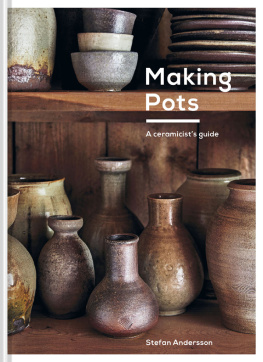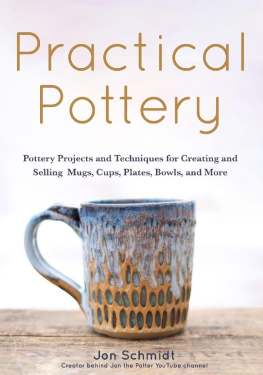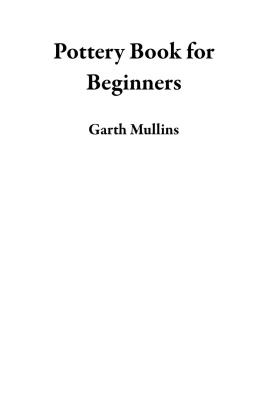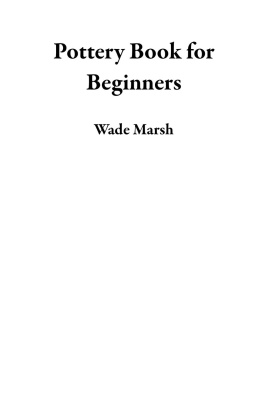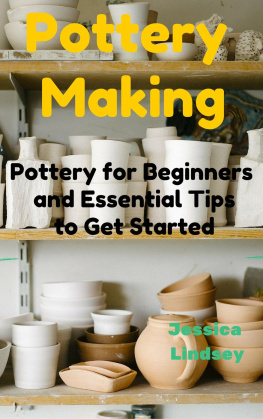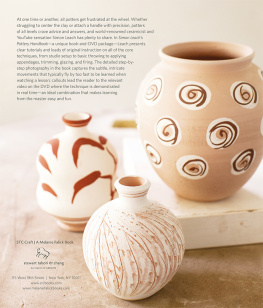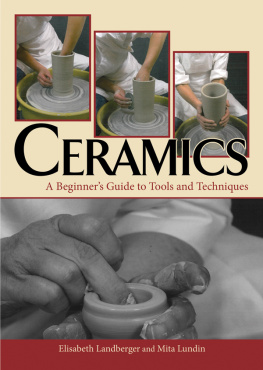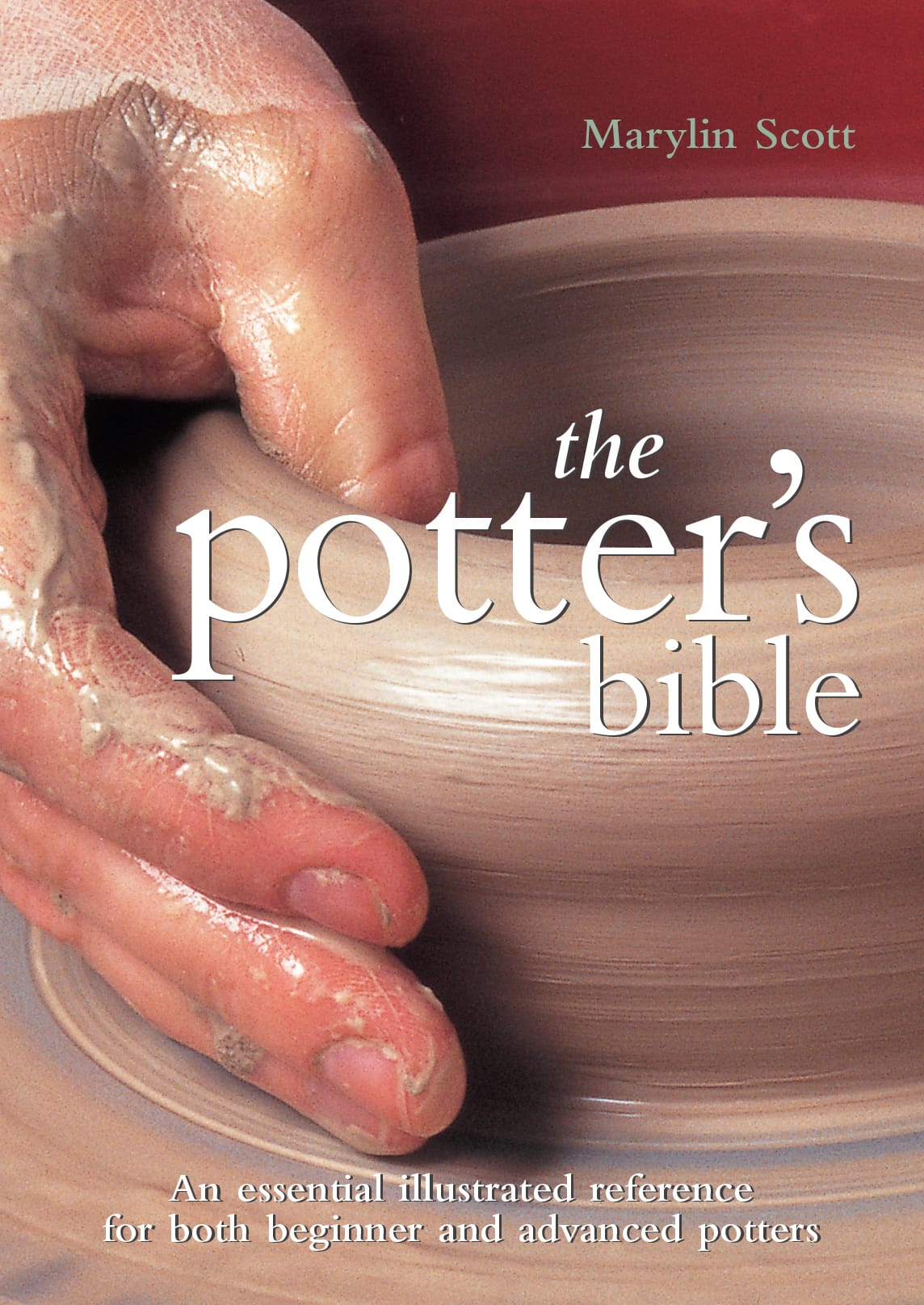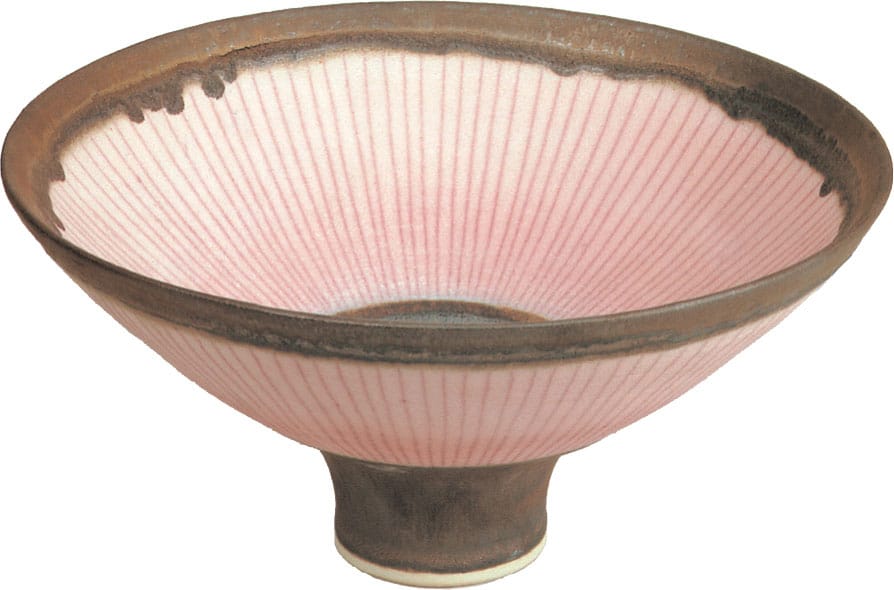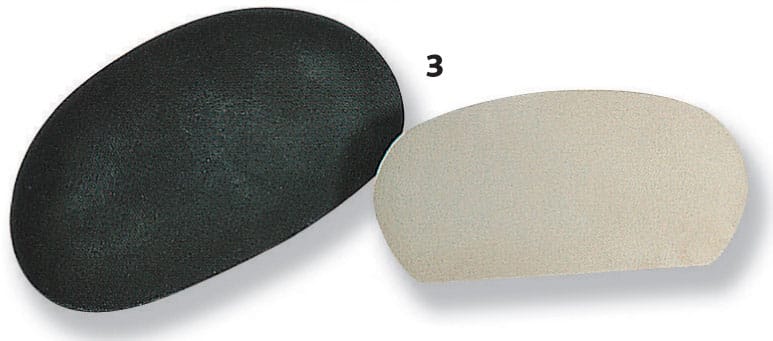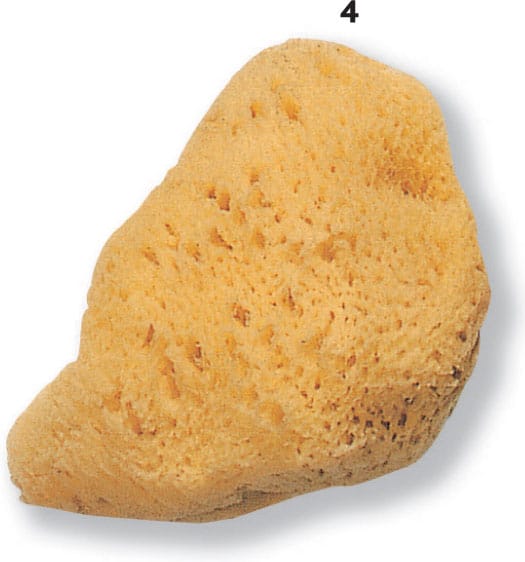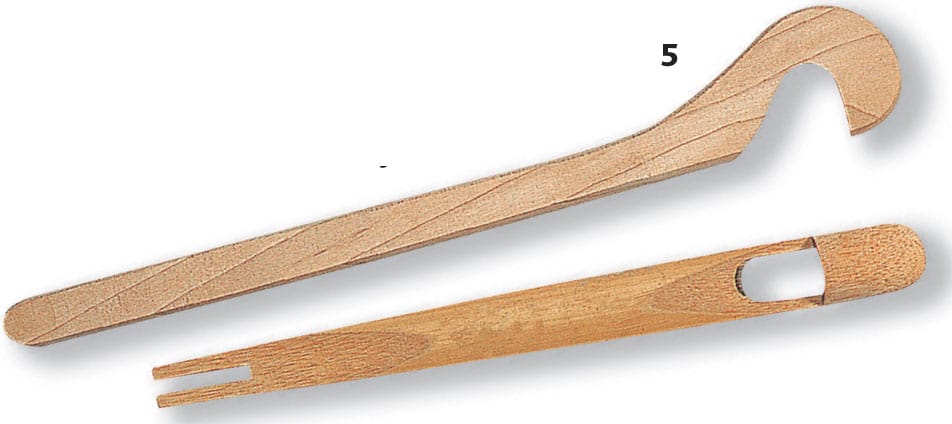Clay is unique in its ability to be molded by hand into objects of beauty that become permanent when exposed to great heat. This wonderful natural material allows artists to create both functional and purely decorative workthe possibilities are more or less endless. Nowadays we are fortunate in being able to draw on a store of knowledge passed down through the centuries, which is continually being added to with new experiments and technical developments.
Getting started
The only real problem with taking up pottery for the first time is that unlike many other arts and crafts it does require both space and some equipmentyou could only make very small clay objects on a kitchen table. But in fact, provided you have a working space, or access to one, you dont need a lot of equipment to make a start. Although the word pottery usually conjures up an image of throwing on the wheel, many fine and sophisticated pots can be made by hand-building methods such as pinching and coiling, which require little equipment, and finished pots can often be sent out to be firedor you can build a sawdust kiln in your yard.
But this book is not primarily aimed at the beginner, although those new to the art, or thinking of taking it up, will find a great deal of useful information. As the title implies, this is a comprehensive manual for the practicing potter, dealing with every aspect of the art from selecting and preparing clay through forming and decorating methods to glaze recipes and firings.
About this book
The book is divided into six chapters: Clay and Pottery Bodies; Forming Methods; Texture and Pattern; Painting and Printing; Glazes and Post-Firing Techniques; and Technical Resources, enabling the reader to quickly find the information they need. Each chapter is illustrated with step-by-step demonstrations of a particular technique, with cross-references to further information about related methods and materials. A carefully chosen selection of finished pots by professional artists shows how individual potters express their ideas through the medium of clay, and an important bonus is the final chapter, which contains several pages of glaze recipes, valuable information on different firing methods, and a glossary of pottery terms.
With its combination of practical advice, exciting images and inspirational ideas, this book is a must-have for all potters at any stage of their career, from beginner to professional.
Hand tools
It is not necessary to spend a lot of money on tools, as a few basics will suffice to begin with. One throwing rib, one sponge, a wire, and a ribbon tool are all you need initially. Many pottery tools can be made at home, which is not only inexpensive but also rewarding because you can make the exact shape that you require.
Illustrated on these two pages are the most commonly used tools for throwing. Brushes and other implements for decorating pottery are shown in the relevant chapters. As you gain experience you will discover which are the best tools for you and the job in hand. Every potter has their own toolkit, containing a mix of handmade, modified, or shop-bought tools.
Craft knife
(1) A craft knife is always useful to have to hand and can be used to trim clay or to cut decoration.
Hole cutter
(2) These are used to cut circular holes in leather-hard (part dry) clay, such as strainer holes in teapots.
Kidneys
(3) Kidneys can be used to either smooth the surface of wet pots or to remove clay during turning when the pot is leather-hard (firm to the touch, but still damp). They are always made from metal, but come in different shapes and thicknesses.
Sponges
(4) Natural or man-made sponges are used to remove water from pots, smooth rims, and clean surfaces. Most potters have a selection of sponges.
Bamboo tools
(5) These are used for sealing joins in pots and for creating different surface textures. They can also be used to model clay.
Callipers
(6) These are most often used for measuring the width of lids and galleries. They can be set to a particular width and put aside until needed later.


